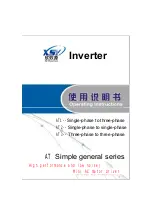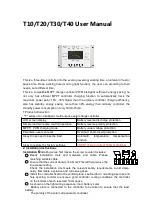
1.5.2.
Prior to carrying out any maintenance work you MUST Identify electrical
isolation methods and isolate all electrical supplies,
1.5.3.
Prior to use and with all electrical supplies isolated You MUST check all
electrical cables, plugs and connections for the following;
1.5.3.1.
Are intact and have no signs of damage, to include but not limited to
bare wires, chaffing, cuts and loose wiring.
1.5.3.2.
If there are any signs of damage, the damaged item MUST be taken
out of service until the damage has been repaired by an electrically
competent person.
1.5.3.3.
All trailing cables should be routed so as not to cause any kind of trip
hazard.
1.5.3.4.
NEVER work on or near electricity with wet hands, wet clothing, and
wet gloves.
1.6.
Batteries
1.6.1.
Batteries present a risk if they become damage
d
by the possible leaking of
electrolyte. This electrolyte is an acid and can cause serious burn injuries. Care
should be taken when working on or near them. NOTE the electrolyte may be in
liquid or gel form.
1.6.2.
Should you come into contact with electrolyte you should;
1.6.2.1.
Remove all clothing contaminated with electrolyte. If you cannot
remove then saturate in water.
1.6.2.2.
Get medical assistance as soon as possible. You must advise the
medical staff of the type acid.
1.6.2.2.1.
Lead/acid battery = dilute sulphuric acid
1.6.2.2.2.
Nickel/cadmium = potassium hydroxide alkali electrolyte.
1.6.2.3.
Use fresh running water to wash off excess electrolyte, continue this
until medical assistance arrives. Make sure that you do not wash the
electrolyte to another part of the face or body.
1.6.2.4.
If electrolyte comes into contact with Eyes the electrolyte needs to be
immediately washed away with large amounts of water. Make sure that you
do not wash the electrolyte to another part of the face or body.
1.6.3.
Gasses from charging batteries are highly flammable and great care should
be taken to charge in well ventilated areas.
1.6.4.
There is an explosion risk if the battery terminals are short circuited, when
connecting/dis-connecting ALWAYS exercise great care so that the terminals
or battery leads are NOT allowed to touch
and cause a spark
. ALW
A
YS use
suitable insulated tools.
Page 7
Rev 3
Summary of Contents for DHY6000LR
Page 2: ...Page 2 Rev 3 ...
Page 11: ...2 MACHINELAYOUT Page 11 Rev 3 ...
Page 23: ...11 WIRINGDIAGRAM 11 1 N B Subject to change without prior notice Page 23 Rev 3 ...
Page 25: ...12 SERVICE RECORD SHEET Date Hours Maintenanceundertaken Name Page 25 Rev 3 ...
Page 29: ...NOTES Page 29 Rev 3 ...
Page 30: ...NOTES Page 30 Rev 3 ...
Page 31: ...NOTES Page 31 Rev 3 ...








































